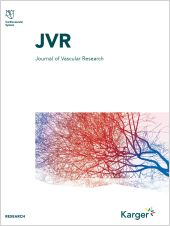Steven S. Segal - Malpighi Award 2013
Steve's interest in the microcirculation was sparked as an undergraduate majoring in physical educationat the University of California, Berkeley in the mid-1970s. Continuing as a graduate student in ExercisePhysiology, he developed a fascination with cardiovascular physiology while studying the metabolicdemands of skeletal muscle in exercising humans. Viewing exercise as the interaction between muscularperformance and blood flow, Steve pursued doctoral studies at the University of Michigan (PhD, 1984)where his research explored the dynamics of contractile performance and biochemical adaptationsunderlying reinnervation, revascularization and regeneration of transplanted skeletal muscle.
 Focusinghis postdoctoral training on the microcirculation at the University of Virginia, Steve’s work identifiedcell-to-cell coupling through gap junctions as a basis for coordinating vasomotor responses inmicrovascular resistance networks. Since establishing his own laboratory in 1987, Steve’s researchefforts have endeavored to resolve mechanisms by which blood flow control is governed in themicrocirculation, particularly in response to the contractile activity of skeletal muscle fibres and itsregulation by sympathetic innervation. During exercise, motor unit recruitment generates electrical andchemical signals in endothelial cells and smooth muscle cells of microvessels that control thedistribution and magnitude of muscle blood flow.
Focusinghis postdoctoral training on the microcirculation at the University of Virginia, Steve’s work identifiedcell-to-cell coupling through gap junctions as a basis for coordinating vasomotor responses inmicrovascular resistance networks. Since establishing his own laboratory in 1987, Steve’s researchefforts have endeavored to resolve mechanisms by which blood flow control is governed in themicrocirculation, particularly in response to the contractile activity of skeletal muscle fibres and itsregulation by sympathetic innervation. During exercise, motor unit recruitment generates electrical andchemical signals in endothelial cells and smooth muscle cells of microvessels that control thedistribution and magnitude of muscle blood flow.
The Segal laboratory focuses on elucidating thecellular and molecular events that initiate these signals, how such signals are transmitted from cell tocell to orchestrate vasodilation and vasoconstriction in microvascular networks, and how theseintegrative processes are governed by the nervous system. Intravital microscopy enables directobservation of blood flow control in the microcirculation. Complementary studies of isolatedmicrovessels and their constitutive cells enable even greater resolution of specific regulatory processes. Pharmacological, biochemical, optical and genetic analyses are applied towards resolving the functionalexpression of proteins that mediate cell-to-cell coupling through gap junctions and electrical signallingthrough ion channels. Studies of transgenic mice afford unique insight into how particular signallingpathways affect control processes within the microcirculation. In turn, these basic relationships arebeing explored in light of how aging affects microvascular structure and function.
Web:
http://medicine.missouri.edu/mpp/faculty-segal-s.html
http://dalton.missouri.edu/investigators/segalss.php
 ESM
ESM 
